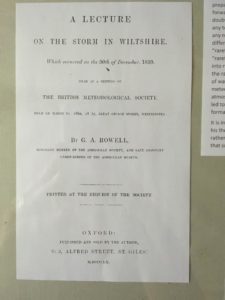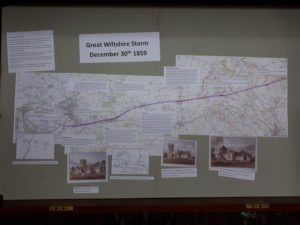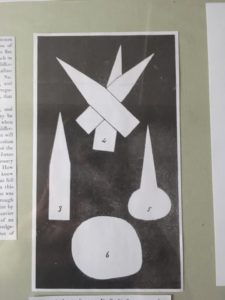I shall offer no apology to the members our of our Society for bringing them a detailed account of a terrific hurricane, of unprecedented violence in this county, I believe..
With storm Eurnice battering the South of England on the 18th February 2022, we thought we would take a timely look back at 'The Great Wiltshire Storm' of 1859...
What happened
Over 160 years ago The Great Wiltshire Storm of December 30th 1859 was a meteorological event rarely seen in the British Isles. It was in fact a tornado that tracked eastwards across the county for about 21 kilometres leaving a narrow path of destruction in its wake.
Three villages Cherhill, Yatesbury and Winterbourne Monkton were unfortunate enough to fall directly in its path. Various accounts of the storm/tornado were written in the newspapers but the most detailed account was written by the Rev A. C. Smith, Rector of Yatesbury and also an active member of the Wiltshire Archaeological and Natural History Society. His full account of the storm can be found in the 1860 Wiltshire Archaeological Magazine Volume VI pages 365-388.
The Course of the Storm
The tornado began around 1.30pm on Friday December 30th 1859. Exactly how long it lasted is difficult to say, timekeeping was still imprecise, at least among those in rural communities.
The first point at which it caused any damage was on the Bowood Estate near the Devizes Road just north of Mile Elm, approximately one mile south of Calne.
It tracked East North Eastwards in an almost straight line covering 21 kilometres before petering out near Ogbourne St George.
What seems to have been fairly consistent throughout the length of the Storm is its narrow width which is described as being between 150 and 250 yards.
Damage caused
The storm caused enormous damage in the narrow corridor it travelled along. More than a thousand mature trees were either uprooted or had their trunks broken, dozens of houses, cottages, barns and other outbuildings were damaged or destroyed. Schools and churches were hit and haystacks carried in the air sometimes hundreds of yards. Some wild animals perished including hares and partridges, found with their feather torn from their bodies.
Perhaps the most remarkable fact related to the storm is that not a single person was seriously injured despite several being thrown through the air or having buildings fall onto them. Not only were people largely spared but there were many miraculous escapes for farm livestock. Cattle escaped amid a mass of fallen trunks and horses and donkeys survived being tossed around by the storm.
Rain, Hail and Wind
As well as the twisting funnel at the core of the storm there emerged remarkable stories of biblical rain and hailstorms showering hailstones 2-3 inches in diameter.
The hail seemed to fall in different shapes in different areas. Reports of wedge shaped or star shaped hail in one area were contrasted with stories of massive stone shaped hail in other areas. The Beaufort Hunt was out that day and although they avoided the tornado itself they were caught up in a hailstorm so fierce that it caused the backs of their hands to bleed and the horses thrashed around uncontrollably due to the pain of the hail hitting their skin.
There is no accurate measure of how much rain fell that day but it was reported that operators of several water mills had to rush to open sluice gates as fast as they could to prevent flooding as the water levels rose several feet in a short space of time.
The wind around the edge of the storm was severe but not exceptional, however what perplexed many minds was how the trees seemed to have fallen in all different directions rather than just that of the prevailing wind.
Details taken from a 2019 display created by our Library volunteers, to mark the 160 year anniversary of the event!




